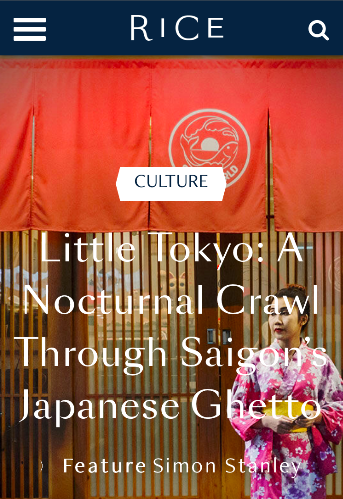
An article titled A nocturnal crawl through Saigon’s Japanese ghetto on the fun district of Le Thanh Ton, previously reported on the blog here.

An article titled A nocturnal crawl through Saigon’s Japanese ghetto on the fun district of Le Thanh Ton, previously reported on the blog here.
The US primetime series China Beach, set in Vietnam War-era Danang, which I used to watch as a young teenager for the theme song, which I only later realised was by the Supremes. And below: another strange cinematic echo of Danang. While walking through the beachside streets my boyfriend remarked how much it reminded him of the Brazilian movie “Neighbouring Sounds”, set in Recife, with its beaches like Danang floodlit at night, fringed by palms and pounded by surf, and the same wide sunny streets with uneasy hints of tension between the rich and poor (after all, who had lived here before all these hotels?)
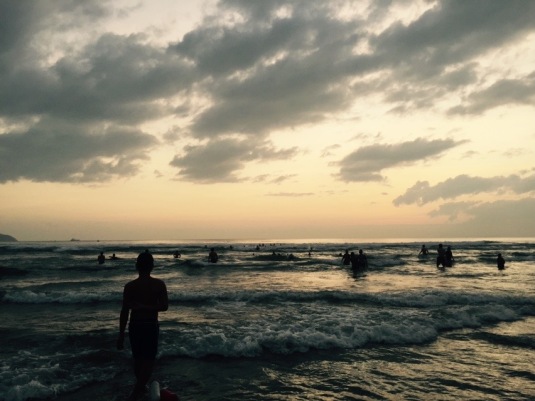

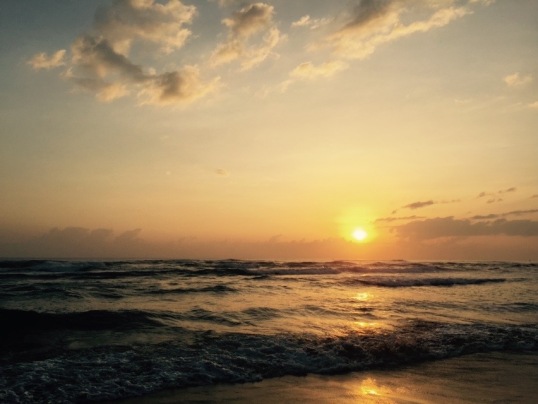
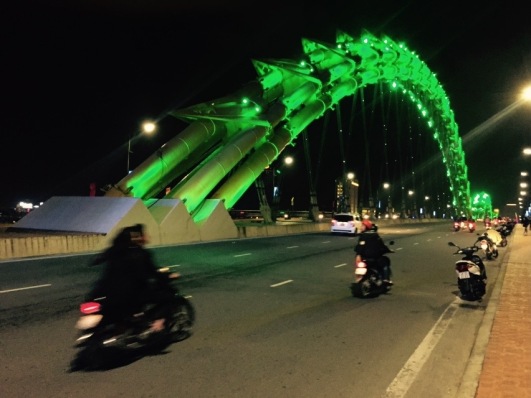
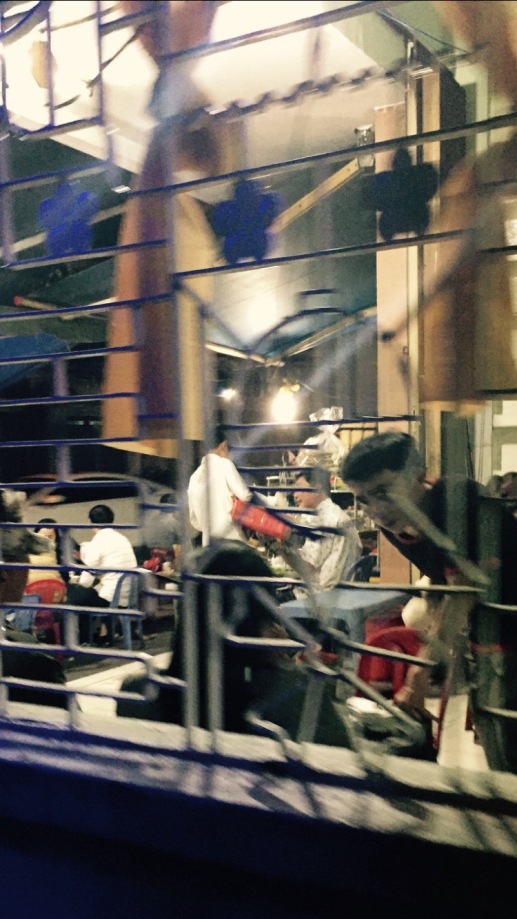
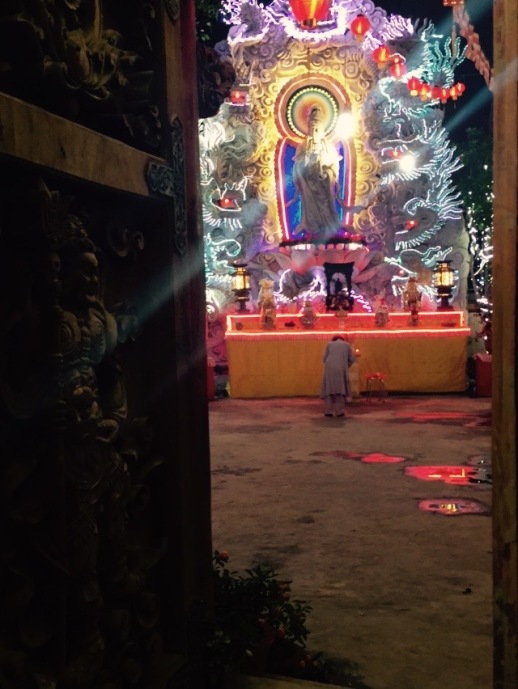
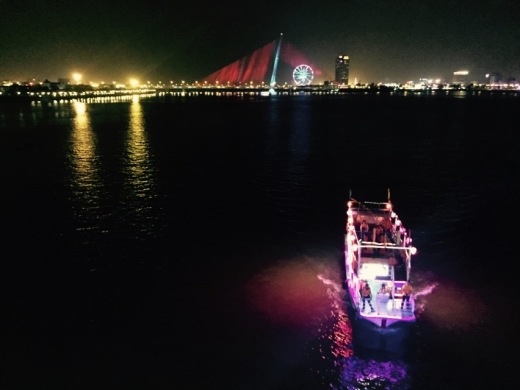

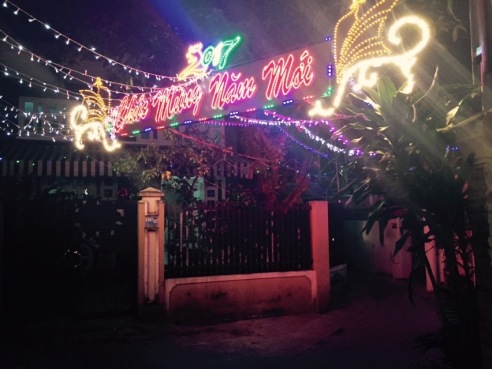
Across the dragon bridge lies the thumping main drag of Nguyen Van Linh, wreathed in neon and lined with blaring cafes and the slightly more sedate, but still buzzing, riverside drive of Bach Dang.
Lovers roam with selfie sticks, vendors sell corn and fishballs on sticks and loud music thumps. Like the other Indochinese people, the Lao and the Thais, the Vietnamese love noise and lights. Whole families promenade, taking pictures of each other, kids treated to helium balloons or plastic toys. The buzz of motorcycles is incessant, cafes are packed in the evening with little stools all facing the footpath and there are pop-up performances in the parks: Vietnamese opera, aerobics or in one case, a blonde woman in a halter-top showing an eager crowd how to dance the macarena.

Even in the beach suburbs, along quiet tree-lined streets, I found constellations of epileptic lights hanging between the branches – whether as new year decorations or all-year installations it was hard to say.
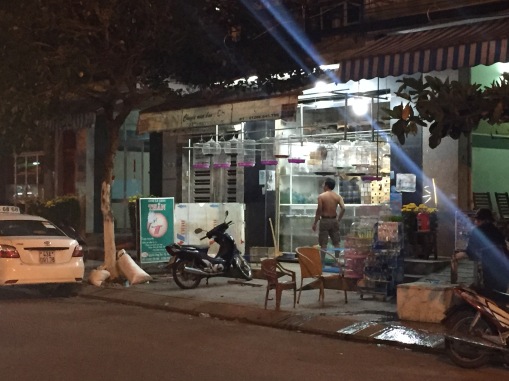
But my favourite night-time entertainment was voyeurism. Whether in the warren-like alleys South of Nguyen Van Linh or the tony streets of the beachside enclave, in the evening locals would open their doors to let in the cool air, and by extension, open their living rooms to the world. As you walk past you can see whole families crowded around flatscreen TVs, or lounging in pyjamas, in front rooms that open directly on to the street. Often, at the centre of the room is a family treasure – a motorbike, safely parked indoors in pride of place – or a flowering tree to celebrate the new year. The floors are usually tiled, walls often painted pale blue or green, and there is almost always a steeply ascending staircase at the back. More than anything else, it was these night-time strolls that gave me a sense of how Danang really lives.
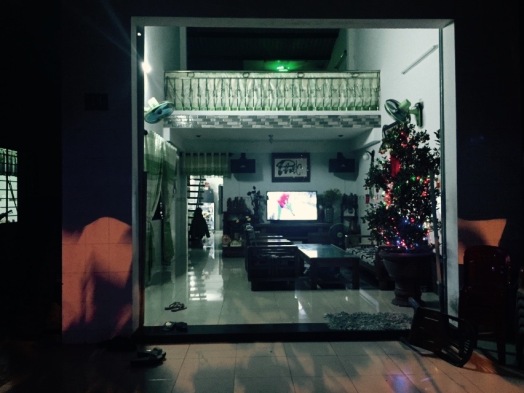
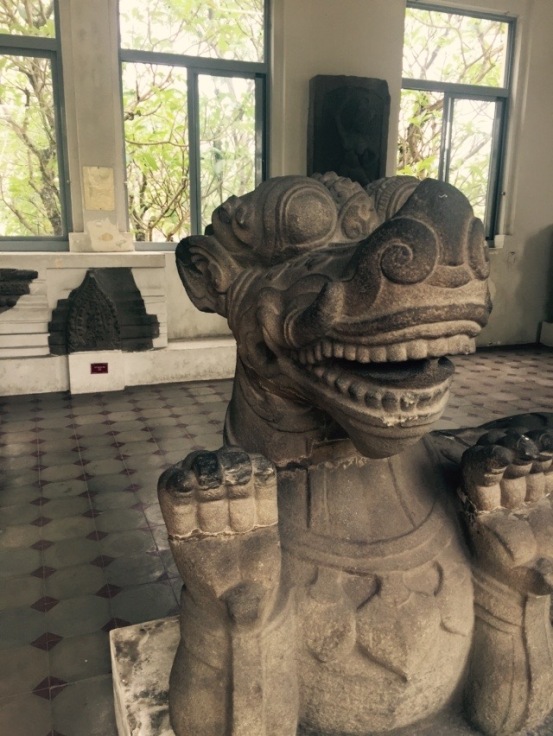
Housed in a hundred year old faded pink colonial building by the river is the city’s Cham museum, supposedly the world’s greatest collection of sculpture from the vanished Cham civilisation. This was centred around the now-ruined city of My Son an easy day trip from Danang. The Cham people still live across Indochina, now mostly Muslim, but their former civilisation worshipped Hindu and later Buddhist deities, and built great trading cities connected to port across Southeast Asia; their curvaceous sculptures were a clear influence on Majapahit Java and the Khmers.
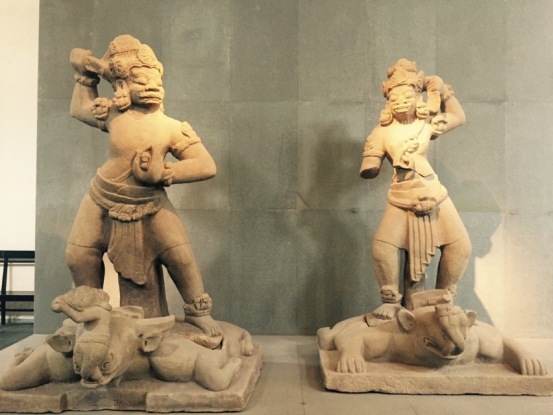
Eating cheaply and well is one of the highlights of any Vietnam trip and we feasted on roadside noodles served with pungent vegemite-y fish paste and sweet pink onions. These were delicious, but would leave me knocked out a few hours later with a blazing MSG hangover. We also saw oysters frying on the street, frog, and ate local specialities like the cao lao noodles in Hoi An, thick and springy with crunchy pork crackling in a fragrant broth, or bamboo soup.
In Danang our biggest discovery was the “Banh xeo” street, an alleyway really, home to rowdy, napkin-strewn restaurants serving the Vietnamese crepes stuffed with beans and shrimps, accompanied by satay sticks of beef.
Afterwards we would walk up to Highlands Coffee, one of the city’s innumerable high-decibel “ca phes” serving evening crowds sugar-loaded coffee drinks and weirdly, absolutely no food.
For dessert, the place to go was AVA, a tiny patisserie in a mouldy little room that served the absolute best chocolate cakes I have ever tasted.
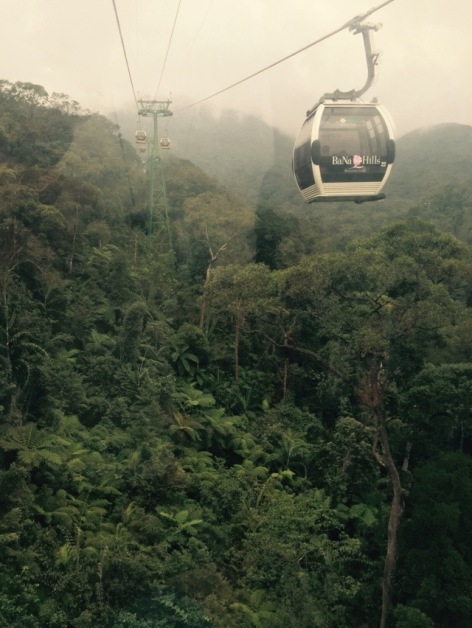
Less than an hour from the Danang Beaches lies the starkly different – and noticeably cooler – Bana Hills, a fantasy resort made up of a fake French village, located atop a mountain. The resort is reached via the world’s longest cable car which glides up over spectacular jungle scenes – rushing mountain streams, enormous ferns and towering Tarzan-like rainforest trees, before entering the clouds and mists near the mountain’s summit.
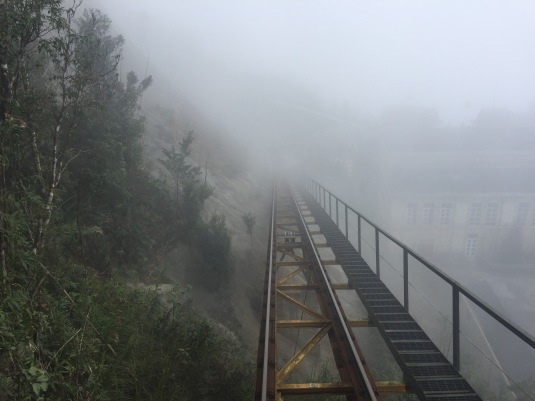

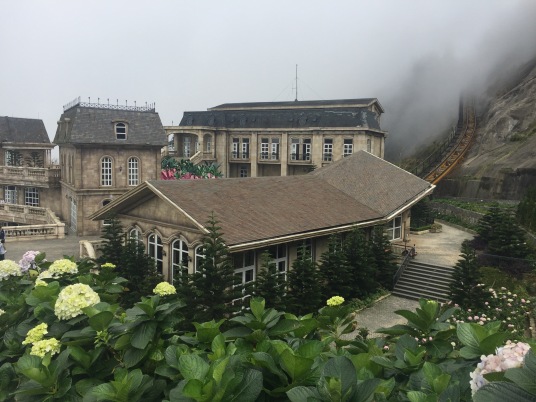
The “village” itself is mainly home to mediocre restaurants and shoving crowds of Vietnamese tourists, but the sheer scale and slickness of the operation came as a surprise to me (what else did Vietnam have up its sleeve?!), the beauty of the ride up is undeniable and the faux-Alpine village, wreathed in mist, is pleasingly surreal.
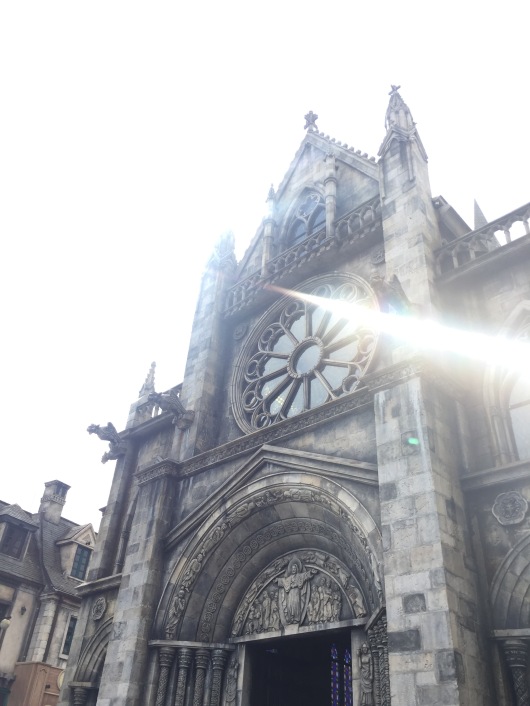
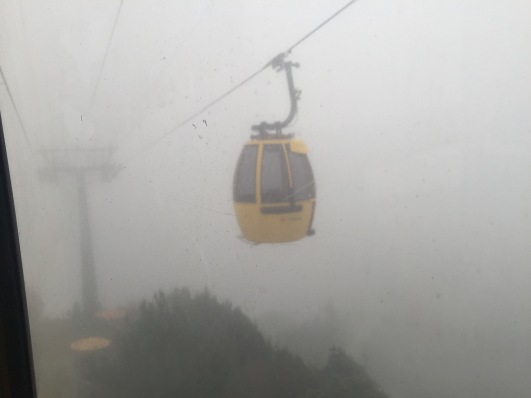
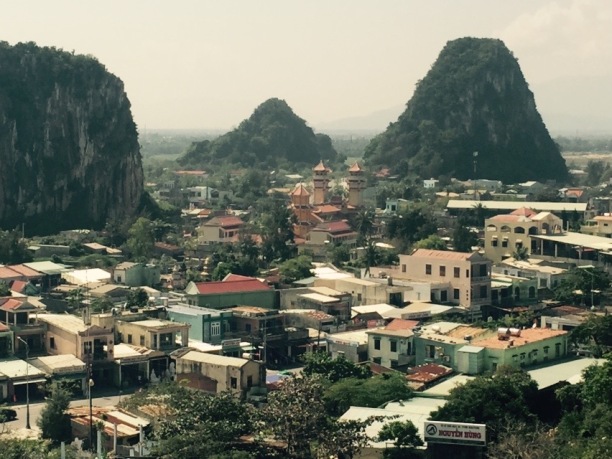
A fifteen minute drive South of Danang’s beaches the Marble Mountains rise up abruptly. The craggy outcrops are riddled with caves and subterranean shrines, where shafts of sunlight filter in through ceiling fissures.
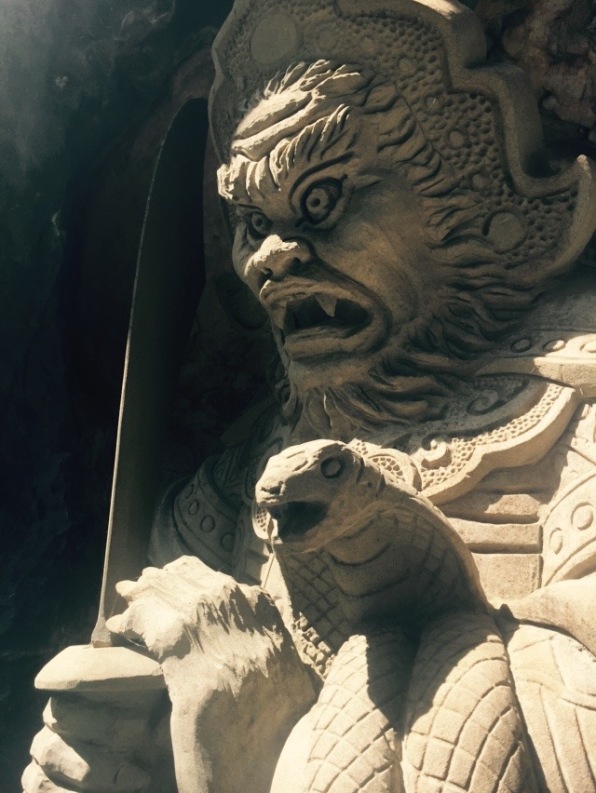
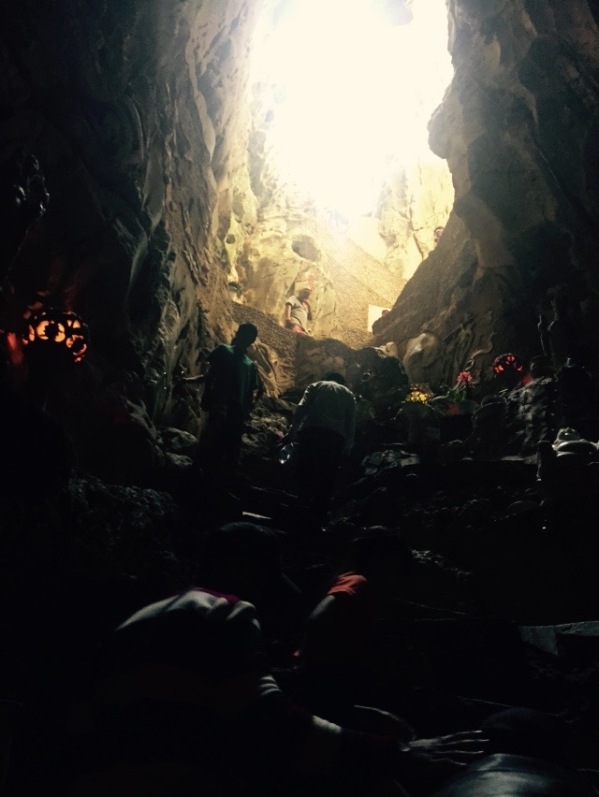
After out visit we dropped by the neighbouring Hyatt to “borrow” their private beach, enjoy a great poolside meal and a massage and then run back to Danang along the sand under rosy twilight skies.
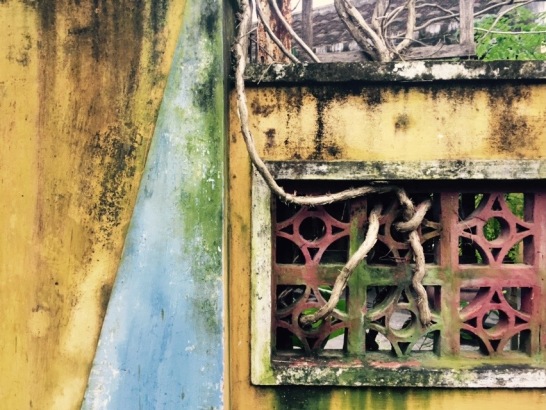

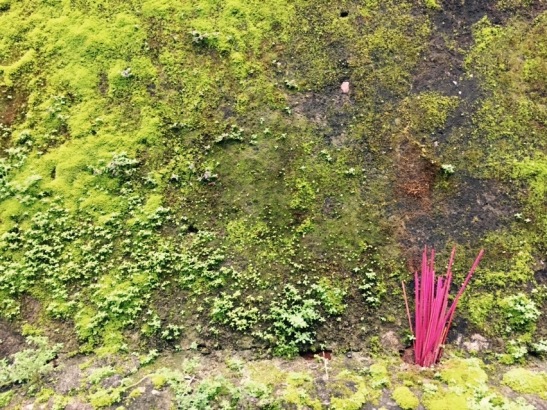
Hoi An, unlike Danang but so close to it, is a hotspot for Western tourists. As soon as you arrive, you notice the increase in white faces on the streets. They are drawn by the lure of an almost-perfectly preserved old town along the river, with tiled shophouses in fading pastel colours. Its is pretty to be sure, although the tourist hordes have swallowed much of the town centre. I preferred to hover around on the edges. We were staying in a beautiful little resort called the Muca hotel, where the restaurant sat on a palm-thatch pontoon in the river, strung with colourful lanterns and the lush gardens bloomed with palm trees and orchids. When it rained – which it did for several days, for hours at a time – we would stay in our room, lounging on a majestically sized bed, reading novels (“Naomi” and “The Sympathiser”) or watching “Spartacus: Blood and Sand” or Chinese singing shows on the iPad.
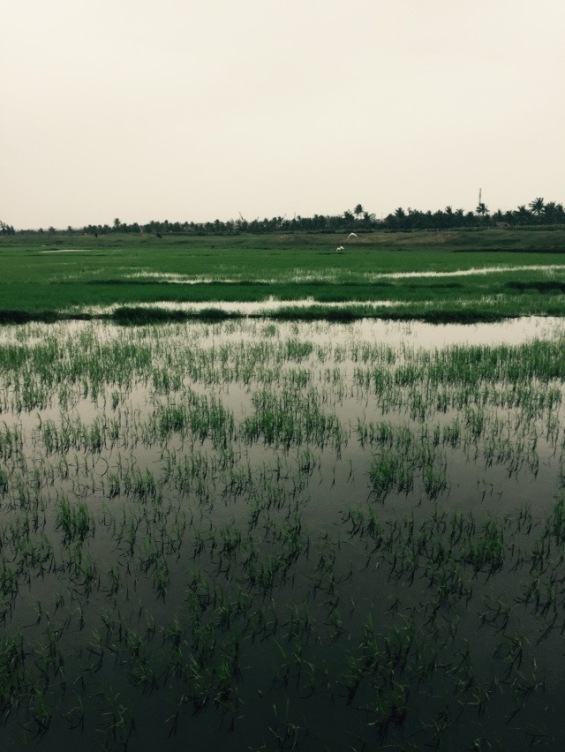
When it was clear we would venture into the old town (I had a suit made) or ride around the rice fields on the hotel’s complimentary bicycles. On these cycle trips we saw water buffaloes in the canals, flocks of starlings and pens of squawking ducks, funerals blaring weird droning horn music and banging gongs and hippies smoking weed furtively in the fields. The peacefulness of the scene, the muted shades of grey and green and the gentle cool drizzle on our arms and faces were one of the highlights of the trip for me.
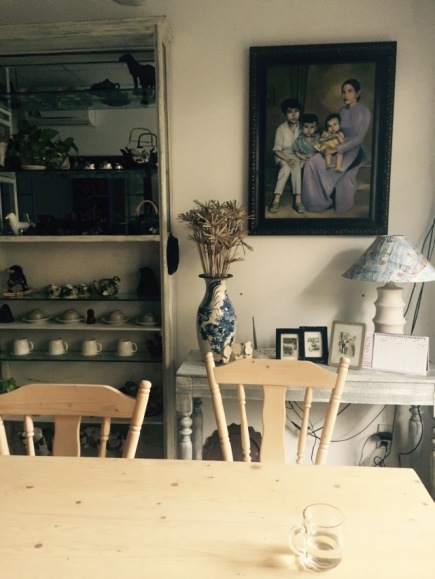
An Gia was our favourite restaurant of the trip, a beautifully furnished traditional home turned Thonglor-style hipster restaurant, serving delicious local food in a leafy courtyard, complete with dogs, kitschy-tasteful ornaments and lovely ceramics. We ate there three times.
This little piece of heaven is located, incongruously, by a dystopian stretch of beach ten minutes from our hotel. Here, the coastline sand had been almost all eroded away, with walls of sandbags left to try and retain what little was left, and shorefront hotels and shops looking forlorn and trashed. It is worth seeing in itself as a metaphor for the things we are doing to our planet – I couldn’t help wondering if sand extraction for cement used in tourism developments had spurred the carnage?
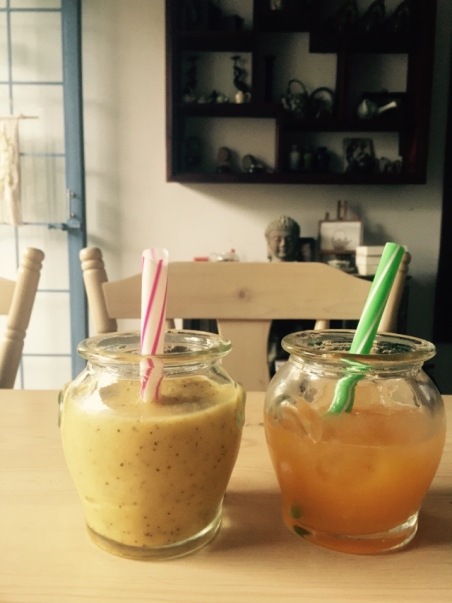

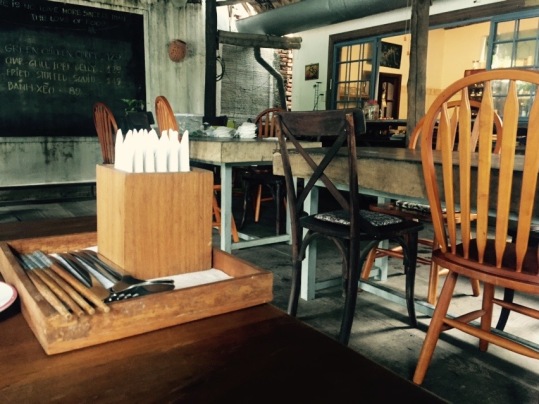
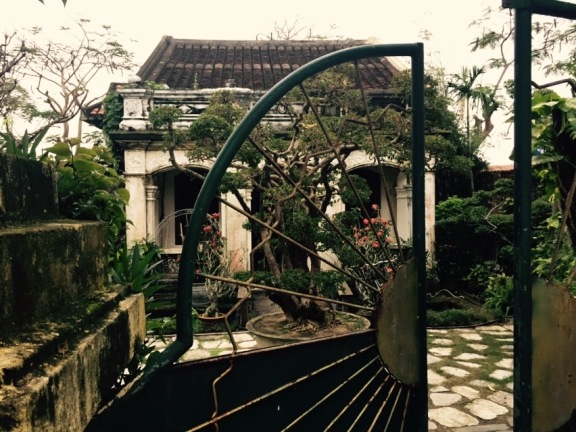
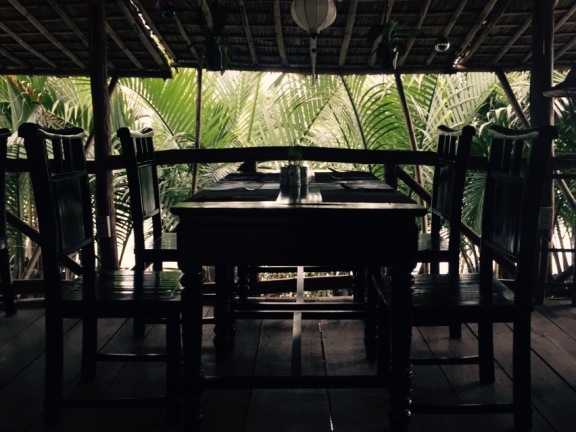
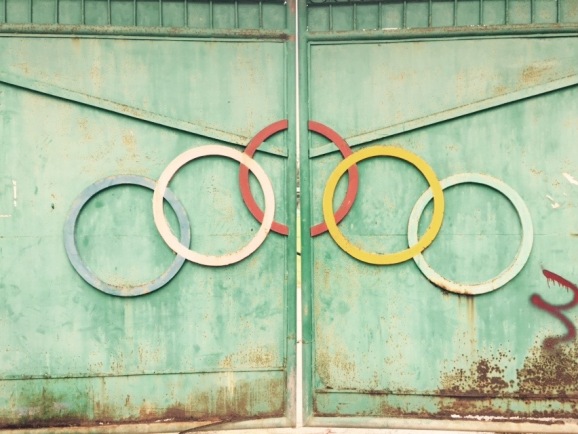
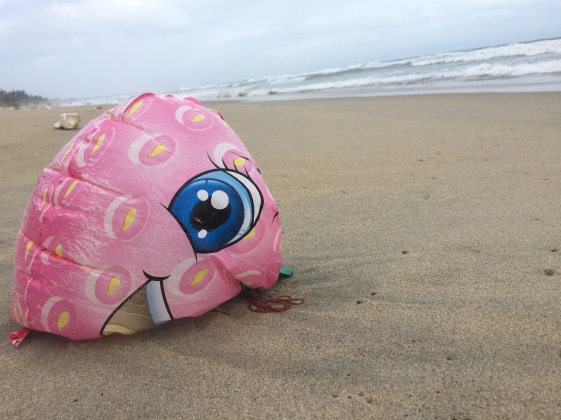
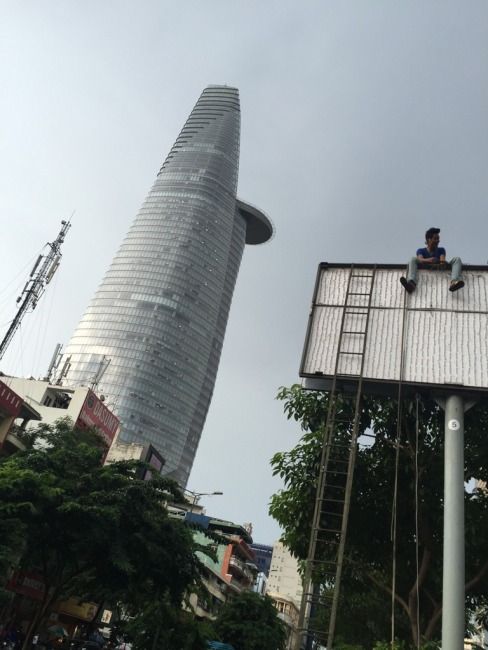
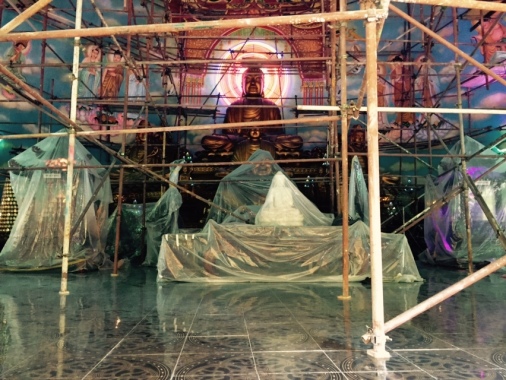

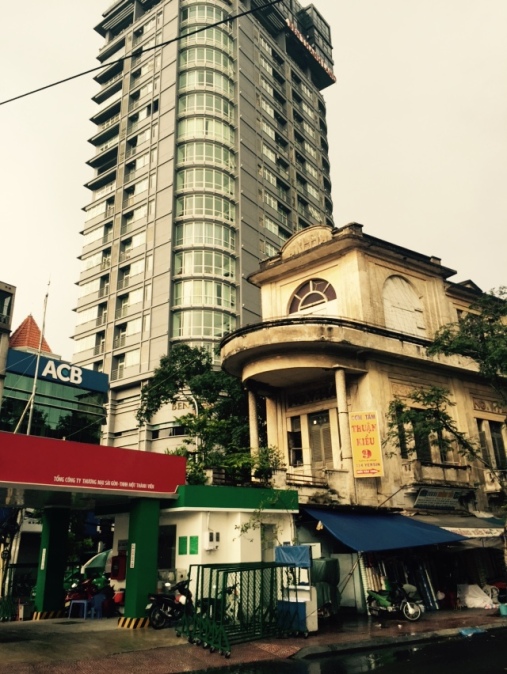
Almost ten years ago, on my first visit to Saigon (or Ho Chi Minh City, the terms seems interchangeable), I wrote:
“(Saigon) is a city of 12 million people – and three million motorcycles – and the commercial capital of Vietnam, the place where everything happens first, where fashions come from and money is made. The Big Time. It sounded exciting. I had high expectations for the city.
But I was to be disappointed. I found it noisy and hectic, but somehow that “buzz” was missing – the fashions were drab and cheap looking, there were no supermarkets or convenience stores, restaurants all seemed to have the same menu, and there wasn’t much choice in the stores. There were upscale areas – the leafy generic-expat-area of Dong Khoi for instance – but they had nothing that couldn’t be bettered in Singapore or BKK or even Phnom Penh.”
But this is no longer true. On my return trip, a decade later, I found that the city had changed immensely, and for the better. Or perhaps, in a slightly higher price bracket hotel and better informed, I was now in a better position to see those changes?
Saigon today has a definite buzz. It also has convenience stores, Mini Stops and Family Marts, and a vibrant restaurant scene. There are Brazilian churrascarias and Japanese sushi-yas and stunningly well-executed Australian style cafes. Skyscrapers had shot up and a brand new metro was under construction, as was a shiny new Takashimaya department store, catering to the needs of the blossoming Vietnamese middle and upper classes. People looked more prosperous and sophisticated, and the city better maintained. And there were surprises, like tattooed “Mexican” gangster barbers, graffiti-decked hipster bars, an under-the-radar architectural revival and local hip hop and house DJs, which seemed to promise a reservoir of creativity as yet barely tapped. The future for Ho Chi Minh seems exciting.
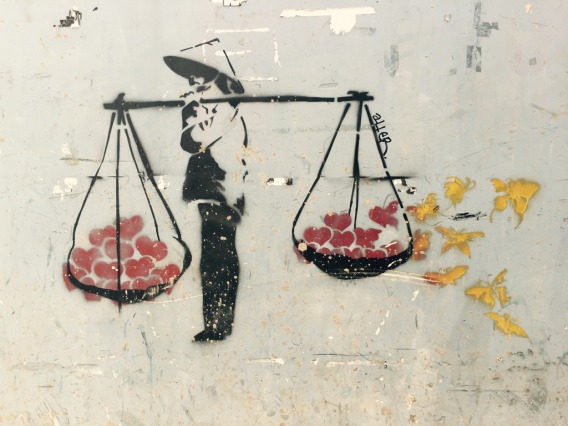
This time, I noticed too some of the advantages the city already has over its regional rivals: the proliferation of graceful old French buildings, the streets lined with immense centuries-old jungle trees and the city’s human scale. I found Saigon surprisingly walkable. Unlike other sprawling Southeast Asian capitals, Ho Chi Minh is – at its centre at least – surprisingly compact. For the average tourist staying in District One (the city’s numbered district system has a delicious dystopian ring) most places of interest are within twenty minutes on foot, and there is a cafe in which to stop on every other corner if you need it. In the cool of the rainy season, I pounded the pavements all day, enjoying the sense of space on the footpaths and the sky still visible in this mainly low-rise city. In all of these regards, I preferred Saigon to Manila or Jakarta, for example.

Of course the traffic and the noise are still there, the street vendors in their stereotypical bamboo hats, the baskets of live skinned frogs in the markets, the stalls of noodle soup and banh mi. Sparrows and annoyingly ill-disciplined children proliferate. Motorcycles scream down the footpaths in rush hour and change direction unexpectedly on the roads. Once out in the suburbs, the sense of space vanishes in densely-packed neighbourhoods of little lanes alive with the shrieking cicada-like buzz of the motorcycles. Women sell vegetables in muddy lanes. Charcoal smoke blends with exhaust fumes. And people still don’t know how to line up.
But I found Saigon this time to have recaptured its sybaritic former self. It is a city of pleasures. There is coffee, everywhere. Cafes are full of people relaxing, groups of friends gossiping and lone workers tapping away at their keyboards. There is great food, of course: broths of fragrant herbs, grilled pork, river fish and exotic tropical fruits. Ho Chi Minh City loves music, although its taste can be questionable : J.Lo and terrible Eurodance blast out of stores at incredible volume. And it has that very Indochinese sense of calm and restraint, one shared with Bangkok, Phnom Penh and Vientiane; it can be both lively and laidback at the same time. Saigon is not too small, not too big, relaxing but not boring, energetic but not overwhelming.
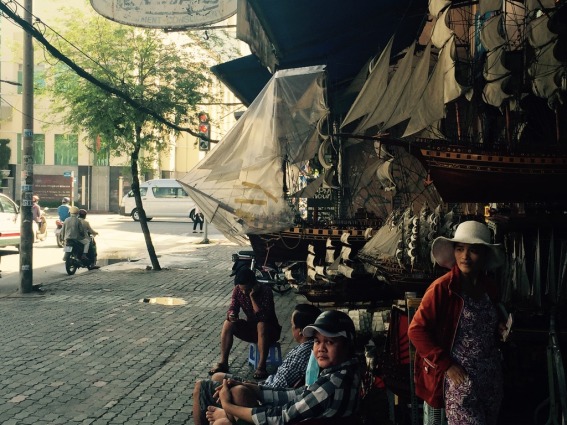
I left the city surprised to find myself a new fan.